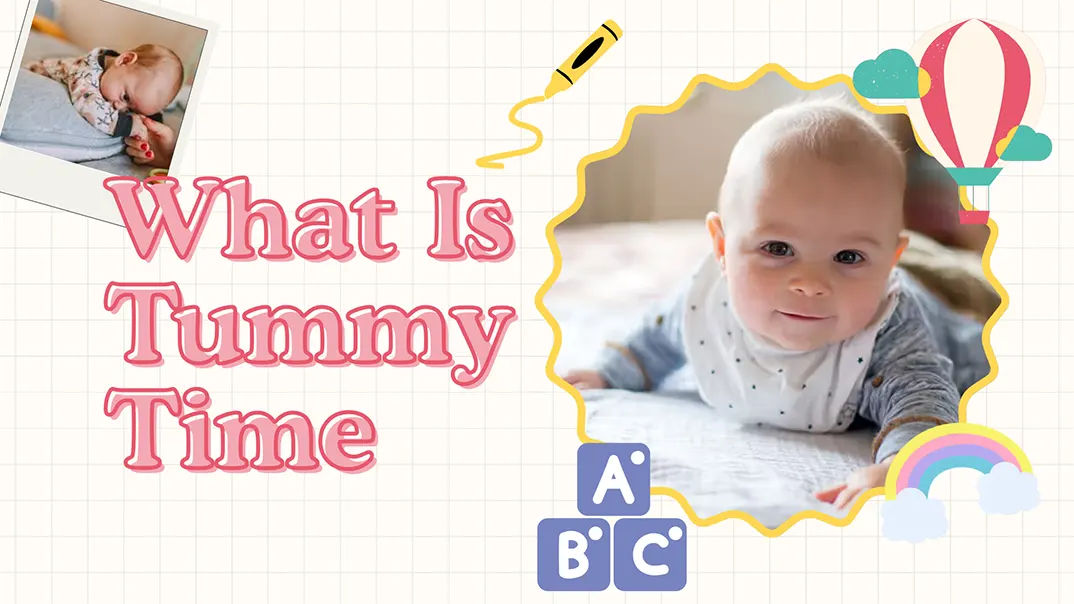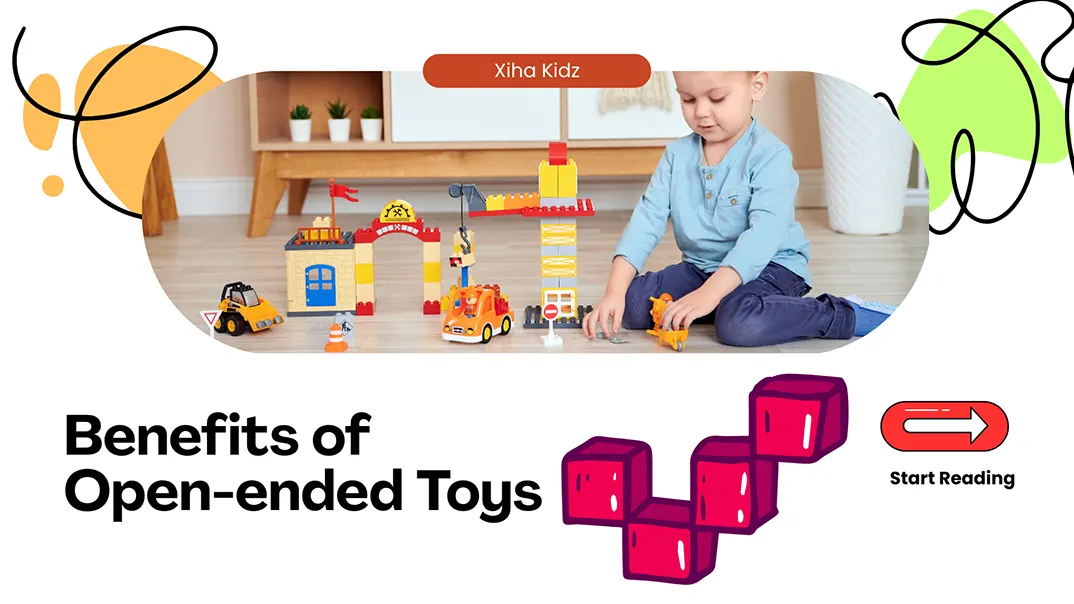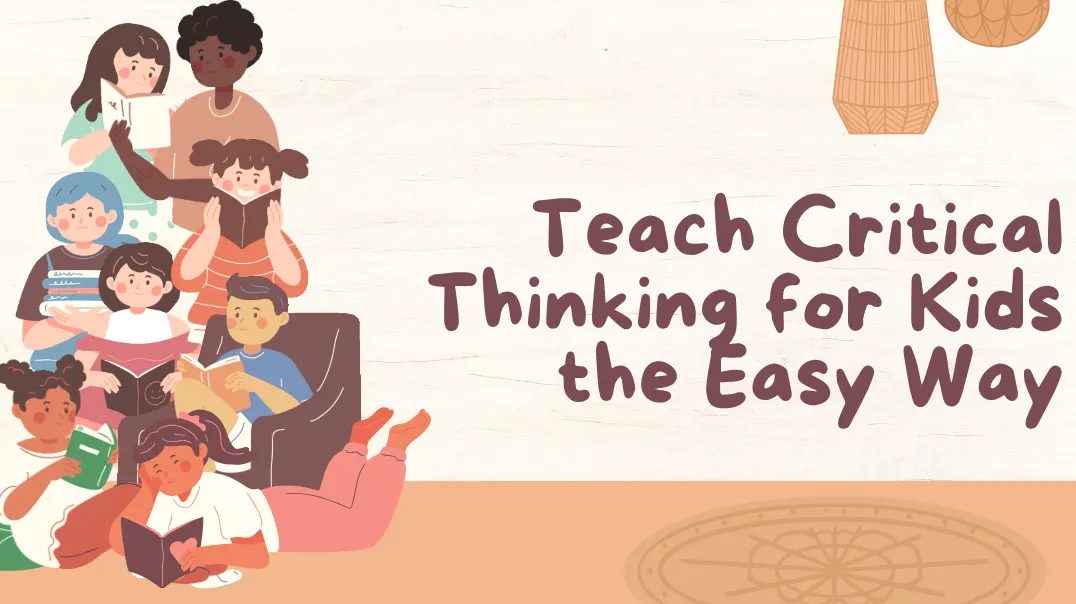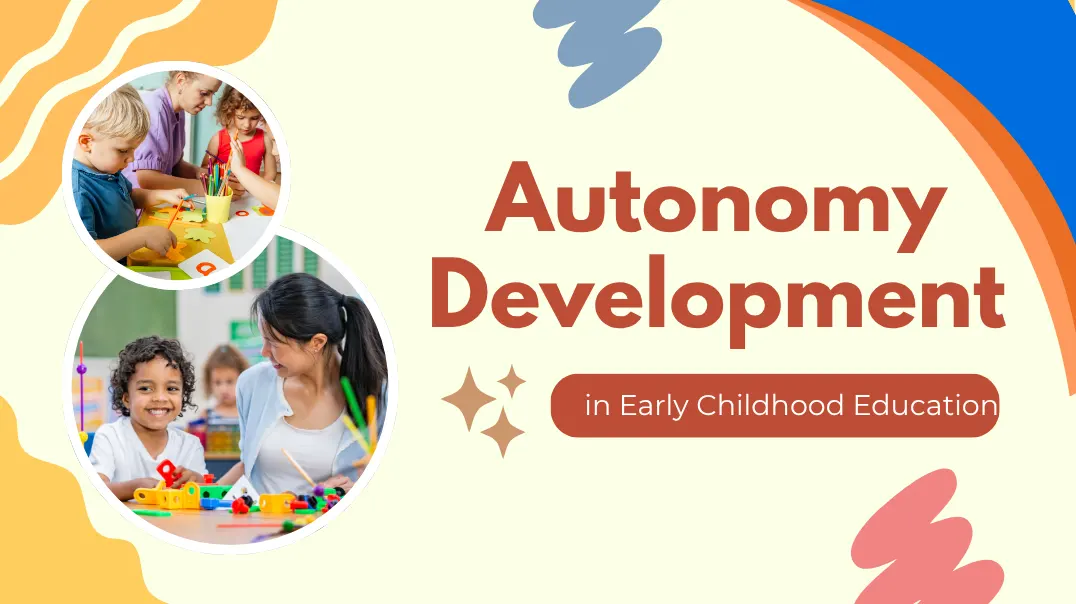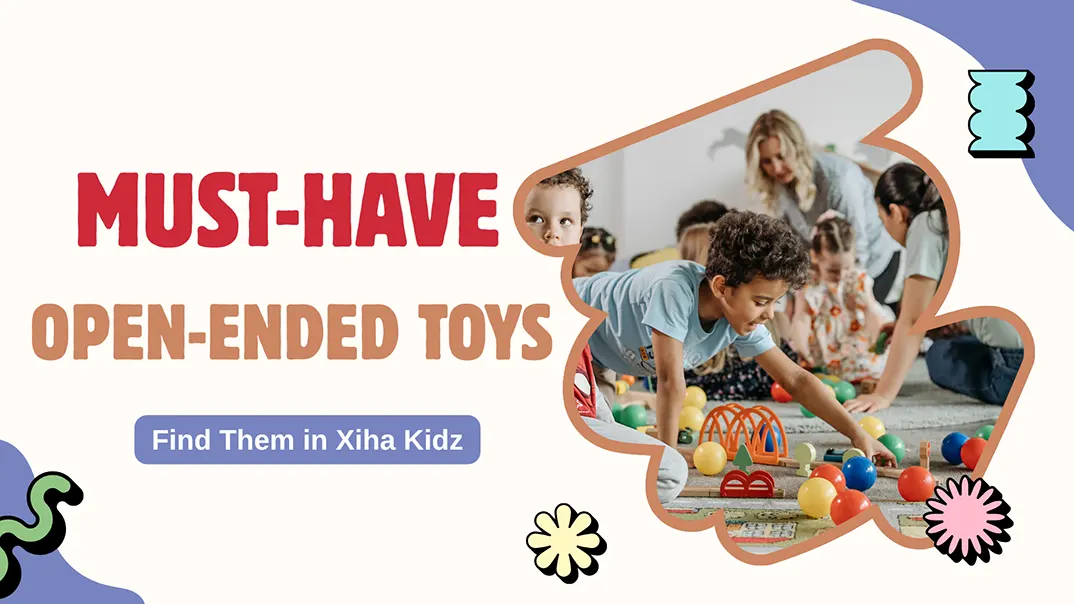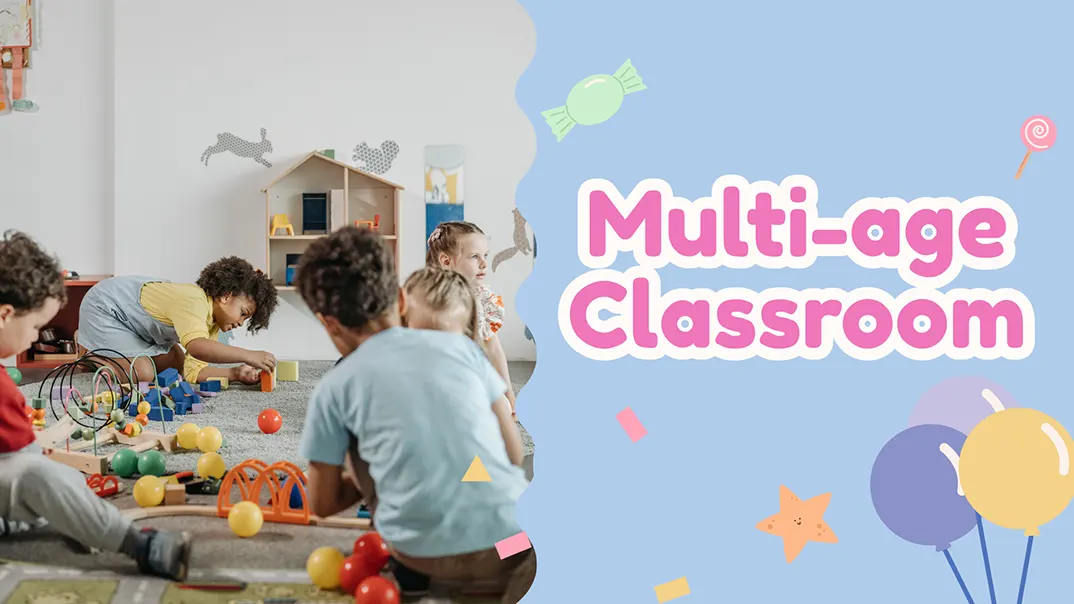Have you ever wondered why some children prefer to build alone, while others enjoy group play? Why do some children struggle to share, take turns, or interact meaningfully with others during play? As children grow, their social skills continue to develop, and the emergence of cooperative play is one of the most important milestones in this journey. Yet many parents and educators are unsure when, how, and in what form this form of interaction should develop.
Cooperative play is a form of play in which children actively participate and pursue common goals through communication, teamwork, and mutual understanding. Unlike earlier play stages, cooperative play involves intentional interaction and joint problem solving. It typically emerges around 4 to 5 years old and marks a major leap in children’s social and emotional development.
Whether you’re a parent, teacher, or caregiver, understanding how cooperative play works is crucial to supporting a child’s social-emotional growth. Stick with us as we explore its defining features, uncover how and when it emerges, and offer actionable ways to create more opportunities for children to collaborate and grow together.
What Is Cooperative Play?
Cooperative play is a form of social interaction where children engage with one another toward a shared objective or purpose, such as completing a task, playing a game, or solving a problem together. Unlike parallel or associative play, which may involve proximity and minimal interaction, cooperative play is rooted in teamwork, communication, and mutual understanding. According to early childhood development experts, the definition of cooperative play includes mutual goal-setting, collaboration, and an awareness of others’ roles within a group activity.

As children transition into this stage, they show heightened interest in others’ ideas and contributions. They negotiate, plan, and often assign roles while learning critical life skills such as empathy, compromise, and leadership.
Characteristics of Cooperative Play
Understanding the traits of cooperative play can help parents and educators identify and support it more effectively. Here are some key characteristics:
- Shared Goals: Children work toward a mutual objective, whether building a structure together or playing a board game as a team.
- Kommunikation: Verbal and non-verbal interactions are frequent and necessary. Children discuss strategies, explain roles, and express feelings.
- Rollenzuweisung: Participants often take on specific roles within the play scenario, like a builder, storyteller, or leader, demonstrating an understanding of group dynamics.
- Problem-Solving: Challenges are addressed collectively. Children brainstorm and choose solutions that benefit the group.
- Turn-Taking and Sharing: Essential cooperative behaviors are demonstrated consistently, including fairness, turn-taking, and the ability to wait or yield.
- Emotionale Regulierung: Children learn to manage frustration and disappointment, especially when working within a group setting.
Examples of Cooperative Play
Cooperative play can be observed in many everyday activities among preschool-aged children. Here are a few cooperative play examples that illustrate when and how children are engaged in cooperative play:
- Building a Fort Together: When children use pillows, blankets, and chairs to construct a play space, they often negotiate roles (builder, lookout, decorator) and make decisions collaboratively.
- Pretend Play with Roles: Games like “house,” “doctor,” or “superheroes” involve assigning characters, enacting scenarios, and working toward a common story outcome.
- Group Art Projects: Children creating a mural or collage must coordinate colors, themes, and placement, which requires planning and cooperation.
- Team Games: Simple sports or playground games, such as relay races, soccer, or cooperative board games, encourage shared objectives and coordinated efforts.
- Cooking or Snack Preparation: In classroom settings, when children help prepare food together—measuring, mixing, and serving—they often demonstrate teamwork and mutual support.

When Does Cooperative Play Start?
Cooperative play generally begins to emerge around the age of 4 to 5 years, although the exact timing can vary based on individual developmental differences and environmental influences. This stage doesn’t arrive suddenly; rather, it evolves gradually from earlier forms of play like solitary, parallel, and associative play.
During the toddler and early preschool, children primarily engage in solitary or parallel play—playing independently or alongside others without much interaction. As their social awareness, language skills, and emotional understanding mature, they begin to show interest in the thoughts and actions of peers. This curiosity lays the foundation for more complex social behaviors such as sharing goals, negotiating rules, and taking on different roles—all hallmarks of cooperative play.
Several developmental milestones align with the onset of cooperative play:
- Improved Language Skills: Around age four, children can better articulate ideas, express needs, and understand others, making collaboration possible.
- Cognitive Growth: With a deeper understanding of cause and effect, children begin to see the value in working together to achieve outcomes.
- Emotionale Regulierung: They start managing emotions like frustration or disappointment, which is essential in group dynamics.
- Social Understanding: Empathy begins to form, allowing children to consider others’ feelings and perspectives.
Why Is Cooperative Play Important?
Cooperative play isn’t just about having fun with friends—it’s a powerful catalyst for a child’s overall development. Children engaging in cooperative play build the foundation for future success in relationships, academics, and emotional well-being. In fact, early childhood educators consider this stage a milestone and a vital process for learning how to navigate the complex world of human interaction. Here are some benefits of cooperative play.

Social and Emotional Development
One of the most profound benefits of cooperative play is the enhancement of social and emotional skills. Children learn how to:
- Express their ideas and listen to others
- Resolve conflicts peacefully
- Develop empathy and compassion
- Build trust and mutual respect
These skills are essential for building healthy relationships throughout life. In cooperative play, children also learn how to regulate their emotions when faced with challenges, frustrations, or disagreements, which requires patience, flexibility, and understanding.
Communication and Language Skills
Interacting with peers in a group setting promotes Sprachentwicklung. Children must explain their ideas, ask questions, negotiate roles, and sometimes advocate for their preferences. This kind of dialogue naturally enriches vocabulary, enhances sentence structure, and builds confidence in verbal expression.
Cognitive and Problem-Solving Abilities
Cooperative play requires mental coordination. Children must plan together, solve problems, and make joint decisions. Whether they’re building a pretend spaceship or organizing a game of tag, they are exercising critical thinking, memory, and reasoning skills. These moments of shared decision-making are incredibly valuable for cognitive development.
Moral Development and Ethical Reasoning
Through cooperative play, children begin to understand concepts of fairness, justice, and right versus wrong. They negotiate rules, enforce them collectively, and learn what it means to “play fair.” These early experiences form the roots of moral reasoning, helping children understand accountability and the consequences of their actions.
Preparation for Formal Learning Environments
Classroom life is inherently collaborative. From group projects to shared responsibilities, children are constantly expected to function as part of a team. Cooperative play mirrors these dynamics, making it a natural bridge to formal education. It helps children adapt to structured settings, follow multi-step instructions, and contribute positively in group situations.
The Stages of Play Leading to Cooperation
Cooperative play is not the starting point of social interaction in early childhood—it’s the culmination of a rich and gradual progression of play behaviors. Before children fully participate in group cooperation, they pass through foundational stages that build the necessary skills for interaction, empathy, and shared purpose. Understanding these stages helps educators and parents understand that cooperative play is desirable and developmental.
Mildred Parten’s Stages of Play

Mildred Parten, a sociologist and pioneer in the study of children’s play, identified six stages of play in 1932. These stages reflect how social interaction develops and provide a useful framework for understanding where cooperative play fits within early childhood development.
- Unoccupied Play: The child appears inactive but observes their surroundings and experiments with movements. It’s the earliest form of play seen in infants.
- Einzelspiel: The child plays alone, focusing on their own activity without interest in what others are doing. This stage builds concentration and independence.
- Zuschauerspiel: The child watches others play without directly joining in. They may ask questions or express interest, but remain observers.
- Paralleles Spielen: Children play side by side but do not interact directly. Each child has their own set of materials and goals, though they often engage in similar activities.
- Assoziatives Spiel: Children begin to interact by sharing materials or commenting on each other’s play, but their play isn’t yet coordinated toward a shared goal.
- Kooperatives Spiel: The final and most socially advanced stage, where children work together to plan, create, and carry out a shared activity. It involves communication, negotiation, and a strong awareness of the group dynamic.
Cooperative play is the sixth and final stage, representing the peak of social play maturity in early childhood. It relies heavily on the skills nurtured in earlier stages—observation, communication, individual focus, and emerging social awareness.
Associative Play Vs. Cooperative Play
| Aspekt | Assoziatives Spiel | Kooperatives Spiel |
|---|---|---|
| Nature of Interaction | Social engagement without structured collaboration | Organized interaction with shared goals |
| Purpose of Play | Individual interests with some social exchange | Group-oriented play with a common objective |
| Role Differentiation | Roles are undefined and flexible | Roles are clearly assigned and purpose-driven |
| Communication Level | Basic verbal exchange; limited coordination | Advanced communication involving planning, negotiation, and feedback |
| Emotional Engagement | Emerging empathy; emotional responses remain largely self-focused | High emotional involvement with mutual understanding and empathy |
| Cognitive Demands | Limited joint problem-solving or strategic thinking | Requires collaboration, joint decision-making, and shared problem-solving |
| Developmental Stage | Typically observed in children aged 3–4 | Emerges around ages 4–5 as higher-order social skills develop |
| Common Play Scenarios | Playing near peers with similar materials but without coordination | Engaging in a group activity such as building something or role-playing with a unified theme |
How to Encourage Cooperative Play at Home and School
Encouraging cooperative play requires targeted instruction, a thoughtful environment, and opportunities for meaningful interaction. Parents and educators play a vital role in developing children’s skills for group play. The following strategies are designed to help parents and educators encourage cooperative behaviors in various everyday settings.
Design Intentional Play Environments
Children are more likely to engage in cooperative play when their environment naturally invites interaction. Open-ended materials—like building blocks, art supplies, or dress-up clothes—encourage imagination and joint projects. Arrange spaces to support face-to-face engagement, with areas where small groups can gather comfortably. Reducing clutter and overstimulation also helps children focus on the social dynamics of play rather than being distracted by too many choices.
Model Collaborative Behavior Consistently
Adults serve as powerful role models. Children are more likely to internalize and mimic these actions when caregivers and teachers demonstrate behaviors like turn-taking, sharing, and conflict resolution. Narrating your own cooperative behavior—“I’ll wait my turn while you finish”—helps make abstract concepts concrete for young learners. Guided play, where adults subtly scaffold children’s interactions without dominating the play, is especially effective for children new to cooperative experiences.
Incorporate Structured Group Activities
Structured activities provide clear contexts for learning how to cooperate. Games such as “Duck, Duck, Goose,” relay races, or team scavenger hunts foster turn-taking, communication, and collective achievement. Additionally, collaborative art projects or building tasks (e.g., creating a block city together) promote shared goals and division of labor. These experiences help children see the value of working together and develop the skills needed.

Use Storytelling and Role-play as Tools
Books and stories that emphasize themes of teamwork, friendship, and solving problems together can spark meaningful conversations. After reading, ask open-ended questions like, “How did the characters work together?” or “What could they have done differently?” Dramatisches Spiel games further reinforce cooperative skills by giving children specific roles and scenarios requiring joint decision-making. Pretend play settings—such as a kitchen, veterinary clinic, or spaceship—naturally require negotiation and planning.
Encourage Reflection and Peer Feedback
After cooperative play, take time to help children reflect. Ask what went well, what was hard, and how they felt about their group experience. These conversations strengthen emotional awareness and self-regulation. Peer feedback, gently guided by an adult, also teaches children to listen to and appreciate different perspectives. When praise is given, focus it on effort and collaboration: “You really listened to each other, and that helped your group succeed!”
Support Individual Needs and Differences
Not all children are ready for cooperative play at the same time. Some may need more time in associative play or additional adult support to feel confident joining a group. Pairing quieter or less experienced children with empathetic, socially skilled peers can ease this transition. When conflicts arise, resist the urge to intervene too quickly. Instead, guide children through problem-solving steps so they can learn how to manage disagreements independently.
Verwandeln Sie Ihr Klassenzimmer mit individuellen Möbellösungen
Fostering an Environment for Cooperative Play
An environment rich in opportunities for interaction, creativity, and problem-solving is essential for the development of cooperative play. The physical and emotional atmosphere can encourage or hinder collaboration in a home or classroom setting. By thoughtfully curating the space, routines, and materials, adults can lay the groundwork for children to engage meaningfully with others.
Create Open-ended Play Zones
Open-ended materials—like building blocks, art supplies, puppets, and pretend play items—encourage imagination and shared narratives. Design spaces that are flexible and inviting, allowing children to co-construct their play scenarios. Rather than overwhelming the area with too many toys, prioritize a few multi-use materials that require negotiation and role assignment. This fosters planning and collaboration rather than solitary or parallel activity.
Ensure Accessibility and Clarity
Children are more likely to cooperate when the environment is easy to navigate. Materials should be within reach, clearly labeled, and organized in a way that promotes independence. When children can find what they need and return items without adult assistance, it reduces conflict and empowers them to manage their own play sessions, an important component of successful cooperation.
Choose Child-Friendly Furniture That Promotes Interaction
Furniture in a cooperative play setting should support face-to-face interaction, group focus, and comfort. Opt for low, round tables that allow multiple children to gather and see one another easily, encouraging shared activities like puzzles, art, or building. Child-sized chairs and cushions make the space more accessible and inviting, allowing children to focus on the play rather than adjusting to an uncomfortable setup.
Movable furniture, such as lightweight stools, small benches, or stackable units, offers flexibility for children to reconfigure spaces for different group play scenarios. This autonomy supports planning and collaboration. Additionally, including cozy corners with soft seating or reading nooks can support quieter, cooperative pretend play or collaborative storytelling.
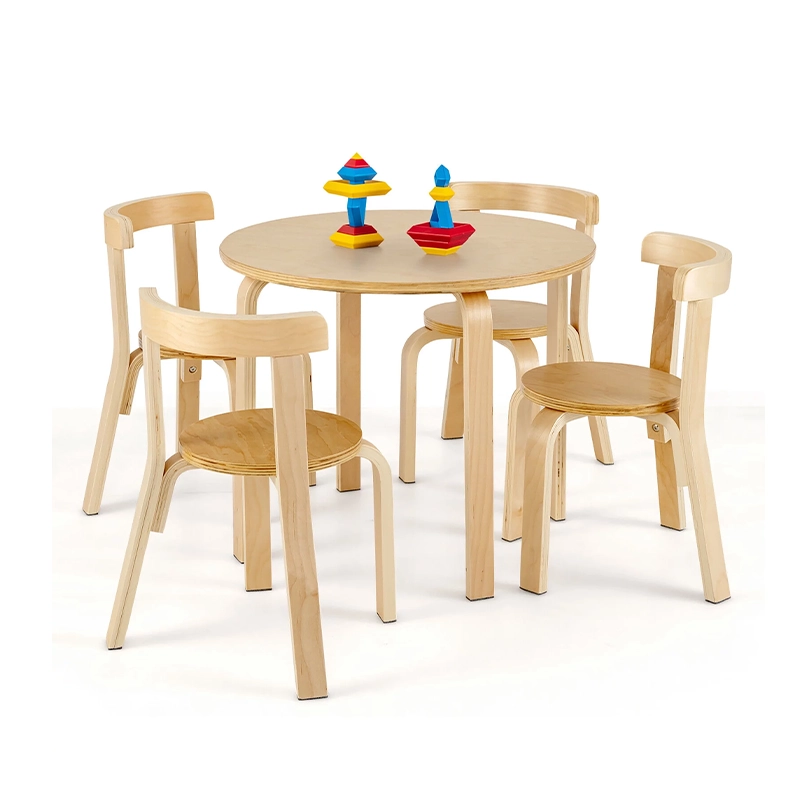

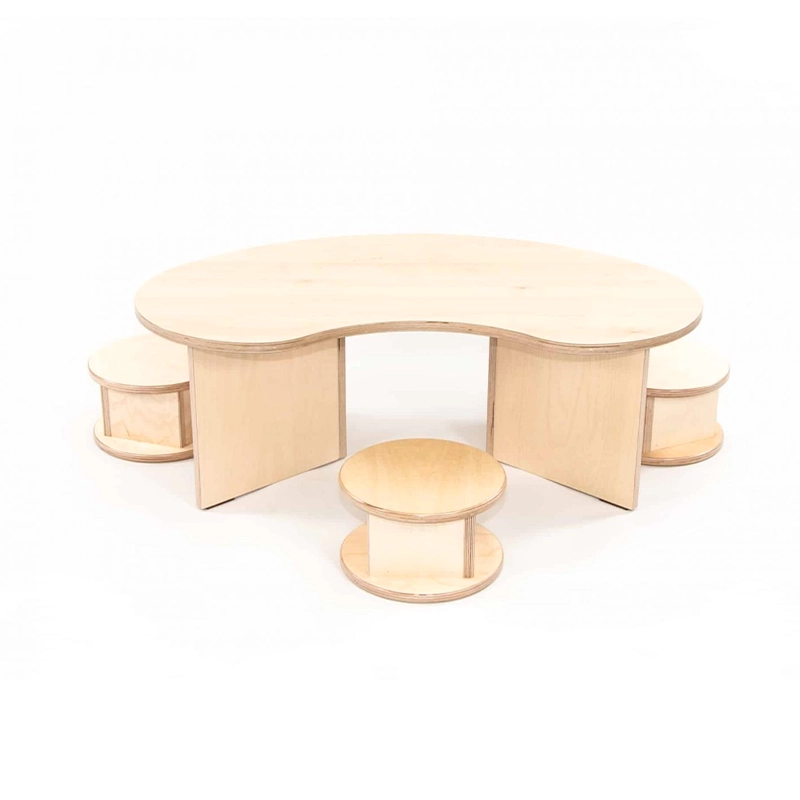
Select Toys That Foster Collaboration
Not all toys equally support cooperative play. The most effective are open-ended, invite shared use, and encourage problem-solving and communication. Here are some highly recommended categories of educational toys and materials that promote collaboration:
- Building toys
Items such as wooden blocks, magnetic tiles, and construction sets are ideal for joint building activities. They naturally require children to plan together, negotiate designs, and coordinate their efforts. - Pretend play sets
Play kitchens, doctor’s kits, tool benches, and themed role-play accessories allow children to assign roles, create shared narratives, and practice social interaction through imaginative scenarios. - Board games and group puzzles
These materials introduce children to structured rules, turn-taking, shared goals, and strategic thinking, all while promoting patience and teamwork. - Loose parts and creative materials
Recyclable items like fabric scraps, bottle caps, cardboard tubes, shells, and buttons stimulate creativity. Children collaborate to decide how to use these items, fostering innovation and joint problem-solving. - Art supplies for group projects
Large drawing paper, shared paint stations, modeling clay, and collage materials support co-creation. Working together on a shared art piece encourages children to discuss, plan, and express ideas collectively.

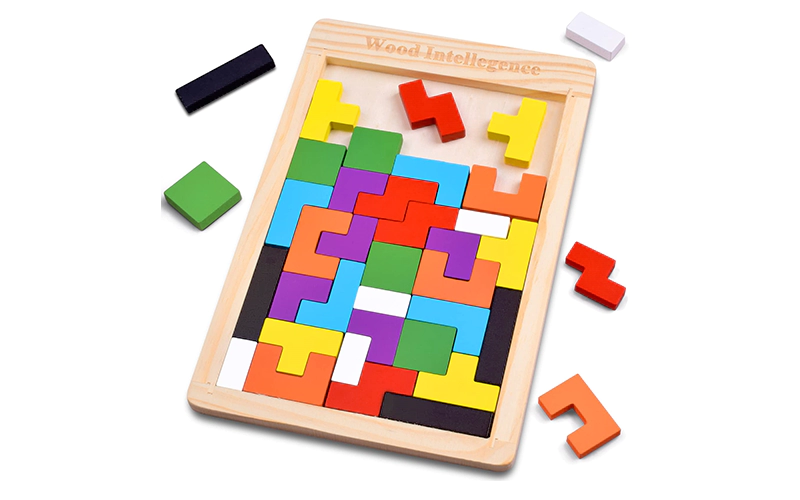
Design for Small Group Engagement
Large open spaces can sometimes lead to chaotic or disconnected play. Instead, provide cozy nooks or well-defined areas where two to four children can engage closely. These smaller group settings are ideal for building communication and sustained collaborative efforts. Use Kindermöbel, rugs, or shelving units to divide spaces and support group focus subtly.
Incorporate Familiar Themes and Real-life Scenarios
Play that mirrors real-life roles—such as “grocery store,” “veterinarian clinic,” or “fire station”—provides a natural context for cooperation. Children instinctively assign roles, solve pretend problems, and organize their actions around a shared goal. These familiar scenarios reduce cognitive load and allow children to concentrate on the social aspects of the play.
Provide Consistent Routines and Transitions
Predictability helps children feel secure and more open to collaboration. Establish regular times for free play and cooperative group activities, so children can anticipate when they will work with others. Smooth transitions between activities reduce stress and support continuity in group dynamics. Consistency also builds a culture where cooperative play is expected and valued.
Cultivate a Positive Emotional Climate
An environment of trust, safety, and mutual respect is the foundation of all cooperative interaction. Adults set the tone through their language, tone of voice, and responsiveness to children’s emotional cues. Encouraging kindness, acknowledging efforts to collaborate, and addressing conflicts with empathy all reinforce the emotional readiness needed for successful cooperation.
Encourage Mixed-Age or Peer Mentoring Opportunities
When appropriate, mix age groups or encourage peer mentoring. Younger children often learn by observing older peers, while older children benefit from leadership roles. This natural modeling of cooperative behaviors can accelerate social learning and create a richer, more dynamic play environment.
Entdecken Sie unsere gesamte Produktpalette
Erhalten Sie Zugang zu unserem umfassenden Katalog mit hochwertigen Möbeln und Spielgeräten für Kindergärten und Schulen.
10 Activities to Encourage Cooperative Play
Fostering cooperative play requires meaningful, intentional activities that allow children to experience collaboration firsthand. The following ten activities provide opportunities for children to build relationships, solve problems, and practice communication—all while engaging in fun, developmentally appropriate tasks.

1. Build a Block City
Invite children to work together using blocks or construction materials to build a city complete with roads, buildings, and parks. This activity requires negotiation, planning, and division of roles to determine what to build and how to organize the space. It strengthens spatial reasoning, teamwork, and shared decision-making, all while promoting creative expression.
2. Parachute Games
Using a play parachute or a large sheet, have children gather around the edge and work together to bounce balls, create waves, or lift the parachute together and duck under it. These games are group favorites and promote coordination, shared timing, and physical collaboration with lots of laughter and energy.
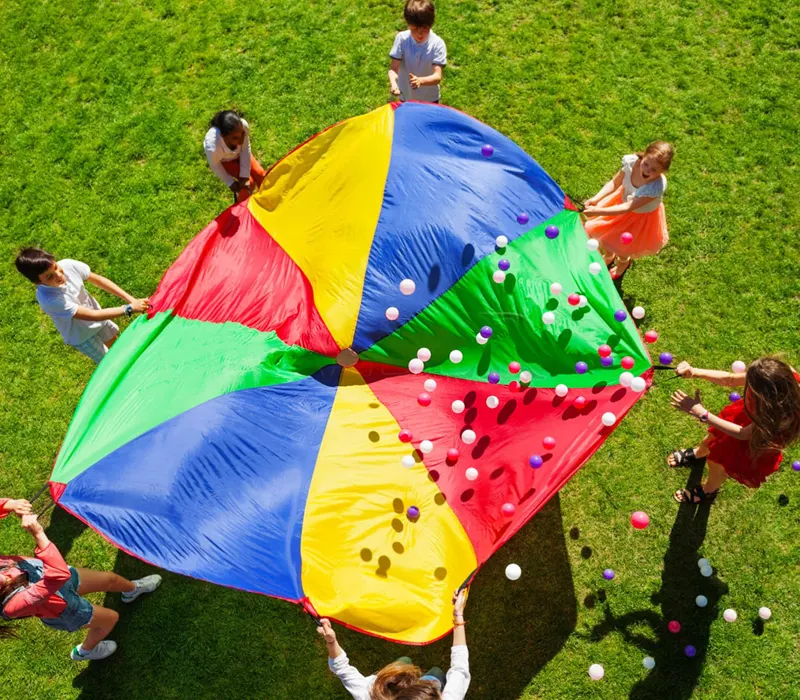
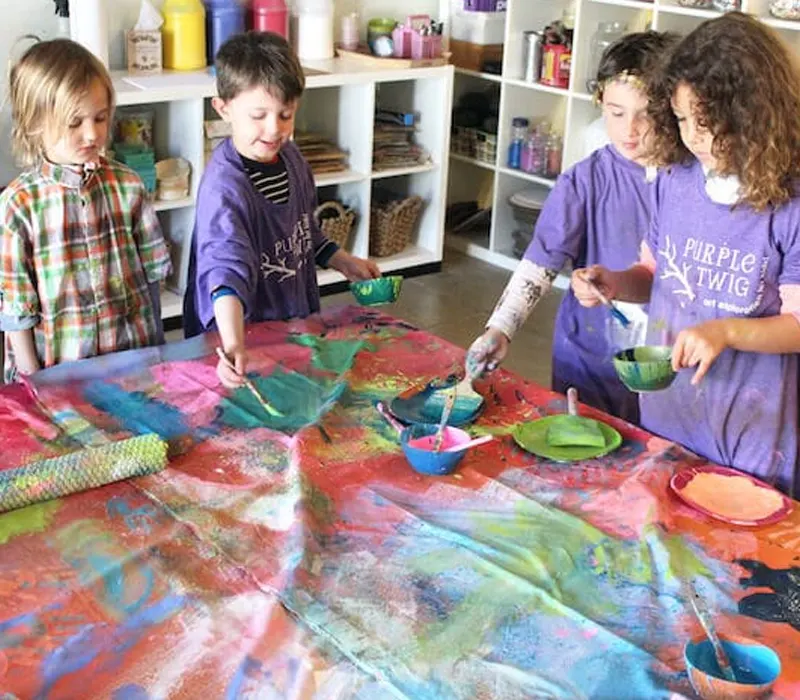
3. Create a Mural Together
Hang a large sheet of paper on a wall or lay it flat on the ground, and provide paint, crayons, or collage materials. Children contribute to one giant collaborative artwork, discussing what to draw, how to use space, and how to blend their ideas. This activity nurtures artistic cooperation, turn-taking, and respect for others’ contributions within a shared creative space.
4. Group Cooking Project
Organize a simple, child-friendly cooking task such as making fruit salad or assembling sandwiches. Children take on different roles—washing, cutting (with supervision), mixing, or serving—requiring them to communicate, sequence tasks, and work toward a common goal. This teaches cooperation and introduces concepts of responsibility, order, and healthy habits.


5. Act Out a Story
Choose a well-known story and have children assign themselves roles to act it out together. Provide props or costumes if available, and let the group decide how to perform the scenes. Through role-play, children enhance empathy, expressive language, and collective storytelling while learning to listen, adapt, and support one another’s performances.
6. Team Obstacle Course
Set up an indoor or outdoor obstacle course and encourage children to complete it in pairs or teams. They’ll need to help each other through physical challenges—holding hands, giving instructions, or offering encouragement. This activity boosts gross motor skills, strengthens cooperation under pressure, and fosters leadership and mutual support.
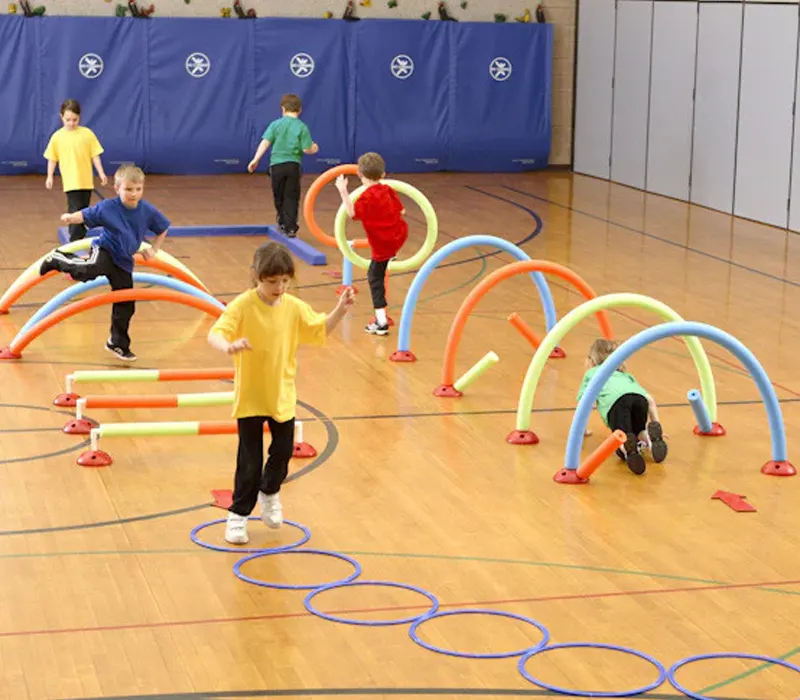

7. Community Helper Role Play
Transform a play area into a pretend setting such as a fire station, veterinary clinic, or post office. Children choose roles and interact within a shared scenario, learning to take turns, perform tasks, and communicate purposefully. This mirrors real-world social structures and builds foundational understanding of teamwork and shared responsibilities.
8. Group Puzzle Solving
Provide a large floor puzzle or complex image for a small group of children to solve together. As they work toward fitting pieces correctly, they must discuss options, take turns, and offer help when someone gets stuck. It’s a perfect way to build persistence, collective problem-solving, and patience in a low-pressure environment.
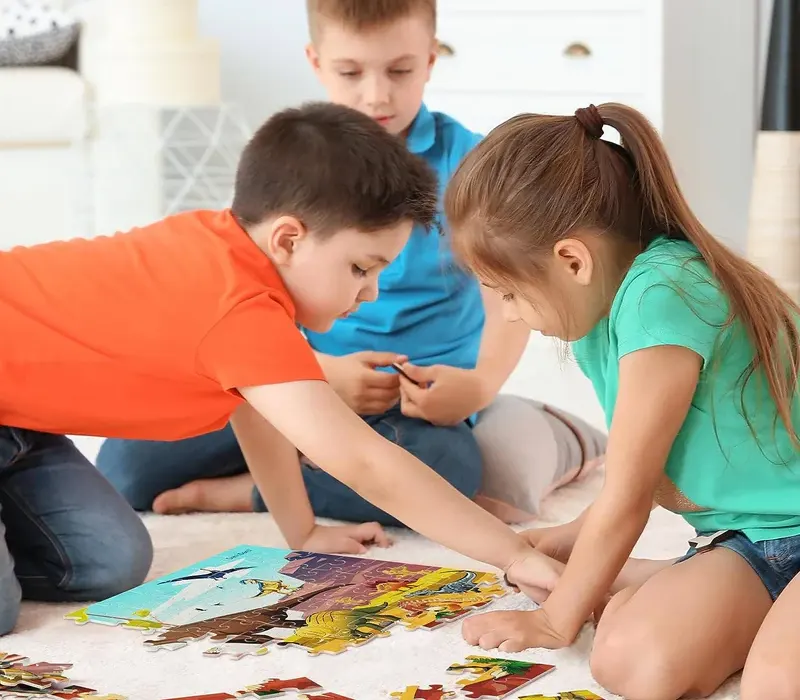

9. Nature Treasure Hunt
Organize a scavenger hunt in a park or playground, giving groups of children a list of natural items to find, like leaves, stones, or feathers. They must collaborate, divide tasks, and share discoveries. This outdoor activity encourages curiosity, communication, and coordinated action while promoting environmental awareness and observational skills.
10. Collaborative Story Creation
Gather children in a circle and begin a story with one sentence, allowing each child to add a line as the tale progresses. This shared storytelling experience requires attentive listening, improvisation, and imagination. It encourages children to build on each other’s ideas, respect narrative flow, and enjoy a collective sense of creation.

What If a Child Struggles With Cooperative Play?
While many children naturally transition into cooperative play during the preschool years, not all do so at the same pace—or even in the same way. Some children may consistently avoid peer interaction, struggle with turn-taking, or become overwhelmed in group settings. These difficulties can stem from a variety of factors, including developmental delays, neurodivergent conditions such as autism or ADHD, or challenges in communication and emotional regulation. Rather than viewing these behaviors as mere misbehavior or disinterest, it’s essential to understand them as potential signs of a child needing additional support to build foundational social skills.
Understanding Individual Differences
Every child brings a unique blend of temperament, abilities, and developmental timelines into their play experiences. While most children begin showing signs of cooperative play between the ages of 4 and 5, some may take longer to develop the necessary social, communicative, or emotional skills. These differences are especially evident among children with:
- Autism Spectrum Disorder (ASD): Children with autism may prefer solitary play or show limited interest in peers. They may struggle with interpreting facial expressions, maintaining eye contact, or understanding the unspoken rules of social play.
- ADHD or Executive Functioning Disorders: These children might appear disinterested in rules or have trouble sustaining attention during group games. Impulsivity can lead to frequent interruptions or difficulty following cooperative sequences.
- Speech and Language Delays: When communication is limited, a child may avoid group activities out of frustration or embarrassment. Cooperative play relies heavily on expressive and receptive language, which can be a barrier.
- Sensory Processing Challenges: Children hypersensitive to sound, touch, or movement may find group play overwhelming or uncomfortable, particularly in unstructured environments.
- Trauma Histories or Emotional Delays: Past negative experiences, including neglect or inconsistent caregiving, may leave a child unsure how to trust or engage with peers.
Recognizing and respecting these individual differences is the first step toward creating an inclusive play environment. Instead of assuming all children are ready for cooperative interaction at the same developmental stage, educators and caregivers must meet children where they are, with empathy and intentional support.
Signs That May Indicate the Need for Support
While some variation in play preferences is natural, persistent challenges in engaging with peers may signal a need for intervention. The following signs should be interpreted in context, observed consistently over time, and discussed collaboratively with families and professionals:

- Persistent Solitary Play Beyond Expected Age
A child consistently avoids group settings or prefers to play alone, even when cooperative opportunities are abundant. - Limited Turn-Taking or Sharing
The child struggles to wait, becomes distressed when asked to share, or often takes toys from peers without negotiating. - Inflexibility in Play Routines
Shows distress when the play doesn’t follow their expected script or resists adapting to group ideas or roles. - Lack of Peer Engagement
Doesn’t respond to or initiate social cues like eye contact, greetings, or collaborative invitations. - Language Avoidance
Limited verbal responses or misunderstanding of simple peer requests, especially when contrasted with their age peers. - Aggressive or Withdrawn Behavior During Group Play
May hit, scream, or walk away frequently during peer interactions, often due to frustration or misunderstanding. - Unusual Repetitive Behaviors During Play
Engages in specific patterns or rituals that dominate play, limiting flexibility and peer collaboration.
If educators or caregivers observe several of these signs consistently, it’s important not to jump to conclusions but to involve specialists for a formal assessment. Early identification ensures that children receive support before social challenges interfere with broader learning or emotional well-being.
Intervention Strategies
Supporting children who struggle with cooperative play involves creating structured, responsive environments and integrating personalized teaching approaches. Here are evidence-based strategies designed for home and classroom settings:
1. Scaffolded Play Experiences
Start with parallel play or simple turn-taking games, gradually increasing social complexity. For example, begin with activities where children build next to each other before encouraging them to build together.
2. Use of Visual Supports and Social Scripts
Children with language or social delays benefit from visual prompts, such as step-by-step charts or play cards, and scripted phrases that model how to initiate and respond in play. Social stories also help children anticipate peer scenarios.
3. Adult-Facilitated Peer Interaction
Teachers or parents can actively coach children during peer play, stepping in with gentle prompts: “Let’s ask Sarah if she wants a turn next,” or “Can we build that part together?” Adults should model inclusive behaviors without dominating the play.
4. Peer Buddy Systems
Pair the child with socially skilled, empathetic peers who can model appropriate behavior. These relationships often become the foundation for confidence in group settings.
5. Practice Through Routine-Based Play
Integrate play-based learning into everyday routines—such as setting the table together, sorting toys by category, or creating group-based cleanup challenges—to provide low-pressure cooperative experiences.
6. Sensory-Safe Play Environments
Offer sensory adaptations such as soft lighting, quiet zones, noise-reducing headphones, or tactile materials that calm the child’s sensory system and make group play more accessible.
Verwandeln Sie Ihr Klassenzimmer mit individuellen Möbellösungen
7. Consistent Positive Reinforcement
Acknowledge even the smallest cooperative effort: “I noticed you waited for your friend to finish—that was really kind!” Immediate and specific praise reinforces desirable behaviors.
8. Play Therapy and Social Skills Groups
Work with professionals to access structured therapy sessions focused on play-based interventions. These sessions often simulate peer interaction in controlled settings and gradually build social competence.
9. Family Training and Involvement
Support must extend beyond the classroom. Empower families with tools and training on how to facilitate cooperative play at home and manage peer-related challenges with empathy.
10. Regular Monitoring and Collaborative Planning
Track progress and adapt strategies as needed. A team approach—including teachers, parents, and specialists—ensures consistent support across environments.
Common Challenges in the Cooperative Play Stage
While cooperative play offers rich opportunities for social development, it also presents a unique set of challenges—not just for children, but for the educators who support them. From managing peer conflicts and emotional outbursts to balancing group dynamics and creating inclusive play environments, teachers often face demanding moments that require quick judgment, empathy, and strategy. This section outlines the most common obstacles experienced during cooperative play, from both the child’s and educator’s perspective, and offers practical, research-informed solutions for navigating them effectively.

Challenge: Children Struggling With Power Dynamics or Leadership
Child Perspective: Some children may dominate or withdraw when play requires negotiation or role assignment.
Educator Challenge: Balancing assertive and passive personalities within a group without singling out or discouraging any child.
Solution: Educators can pre-plan roles in group games or rotate “leadership” tasks. Implement classroom norms around voice-sharing and collaboration, and use reflective prompts during circle time to reinforce inclusive behavior.
Challenge: Conflict Between Peers During Play
Child Perspective: Disagreements over play direction or role disputes can cause frustration or emotional withdrawal.
Educator Challenge: Frequent conflict interruptions make it hard to manage time or maintain classroom flow.
Solution: Introduce structured conflict resolution tools such as “peace corners,” visual feeling charts, and peer mediation scripts. Teachers can also model phrases like “I feel… when…” and practice these during social-emotional learning sessions.
Challenge: Overstimulating Group Play Dynamics
Child Perspective: Sensory overload or emotional sensitivity can lead to avoidance or outbursts during noisy or chaotic play.
Educator Challenge: Maintaining group engagement while meeting individual regulation needs is difficult, especially in larger classrooms.
Solution: Create flexible, differentiated play zones (quiet, active, imaginative) and allow children to self-select based on comfort level. Use calm-down signals and empower children with “exit strategies” to rejoin when ready.
Challenge: Teacher Fatigue or Emotional Exhaustion
Educator Perspective: Constant facilitation of social problem-solving, emotional coaching, and peer monitoring can lead to stress, especially without team support.
Solution: Schools should prioritize teacher wellness by offering co-teaching support, scheduled reflection time, and training in trauma-informed classroom practices. Peer support groups and coaching can also reduce isolation and enhance resilience.
Challenge: Lack of Training in Social-Emotional Facilitation
Educator Perspective: Many early educators feel underprepared to handle complex peer dynamics, especially involving children with special needs.
Solution: Offer ongoing professional development on cooperative play facilitation, conflict resolution, and inclusion strategies. Provide access to behavior specialists or social workers for case-specific support.
Challenge: Difficulty Assessing Social Progress
Educator Perspective: Unlike academic skills, progress in cooperative play is harder to quantify or document meaningfully.
Solution: Use observation checklists, anecdotal notes, and group interaction rubrics to track development. Share progress with families through stories, photos, and reflective summaries, focusing on growth in teamwork and empathy.
Frequently Asked Questions (FAQs)
- How is cooperative play different from parallel or associative play?
Cooperative play involves children actively working toward a shared goal, with clearly defined roles and communication. In contrast, parallel play features children playing side by side without interaction, while associative play includes some interaction but lacks group structure or shared objectives. - What if my child prefers to play alone—is that a problem?
Not necessarily. Some children need more time to develop social confidence. Solitary play is a normal developmental stage, especially in younger children. However, if a child consistently avoids peers or becomes distressed during group activities, it may be worth consulting a specialist. - Can children with special needs engage in cooperative play?
Absolutely. With appropriate support, such as visual aids, structured roles, and guided interaction, many children with developmental delays, autism, or language challenges can enjoy and benefit from cooperative play experiences. - What types of toys best support cooperative play?
Toys that encourage open-ended, imaginative, and team-based interaction are ideal. Examples include building sets, dramatic play props, board games, large-scale puzzles, and collaborative art materials. The goal is to offer materials that naturally require negotiation and shared effort. - How long should cooperative play sessions last?
The ideal length depends on age and attention span. For preschoolers, 15–30 minutes of focused cooperative play is typical. Over time, children may extend these sessions naturally as their engagement and social endurance grow. - What role should adults play during cooperative play?
Adults should act as facilitators, not directors. They should offer gentle guidance, model appropriate social language, and intervene only when necessary to scaffold conflict resolution or help clarify group roles. Encouraging independence in group problem-solving is key. - Can cooperative play be taught, or does it happen naturally?
While some aspects emerge naturally with development, cooperative play can and should be taught. Children learn how to navigate group dynamics and develop positive peer relationships through modeling, guided practice, and supportive environments.
Schlussfolgerung
Cooperative play is far more than a stage in child development—it is a gateway to the essential life skills that form the foundation for healthy relationships, effective communication, and lifelong learning. Through collaborative activities, children begin to understand the value of empathy, the importance of turn-taking, and the power of working together toward shared goals.
Supporting cooperative play requires intentional design of environments, routines, materials, and adult interaction. Early recognition and responsive strategies can open the door to inclusion and engagement for children who face challenges entering or thriving in cooperative settings. Teachers and caregivers play a critical role in modeling respectful collaboration, guiding social learning, and fostering an atmosphere where every child feels seen, valued, and capable.
As we observe, support, and celebrate cooperative play, we are not just watching children play. We are witnessing the growth of their social world—the foundation upon which their future relationships, teamwork, and sense of belonging will be built.


